This afternoon I flew into Badajoz LEBZ and as the approach looks slightly interesting and the weather was CAVOK I took a few pictures. This post is also in reference to the conversation about DME that occurred lately.
First, the relevant part of the approach chart as per the Spanish AIP:
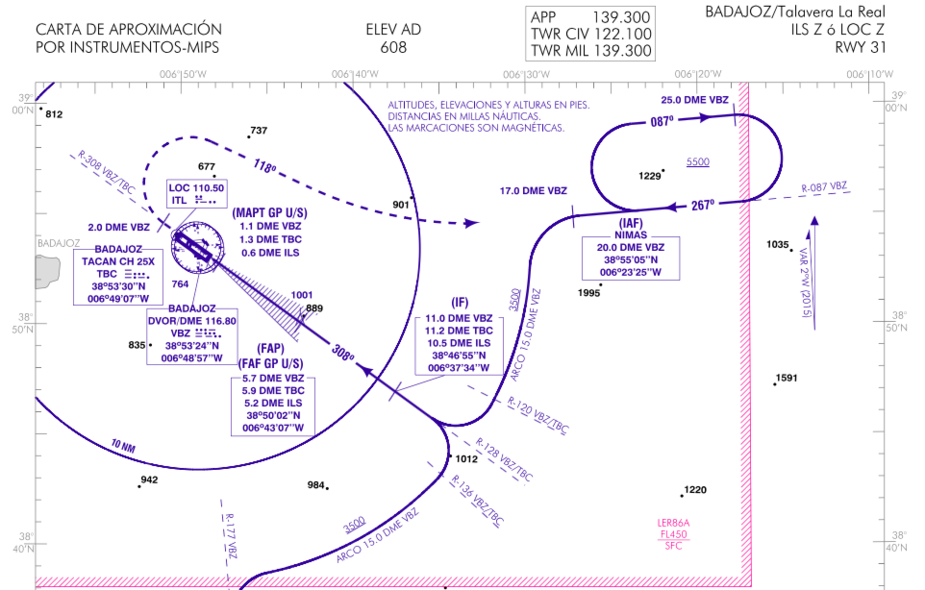
You may notice that the way from the IAF at NIMAS to the localizer is slightly curved. Interestingly on my R9 screen it also appears like that. I don’t know how it was coded and I’m not implying RF legs but it does have a feel of that to it.
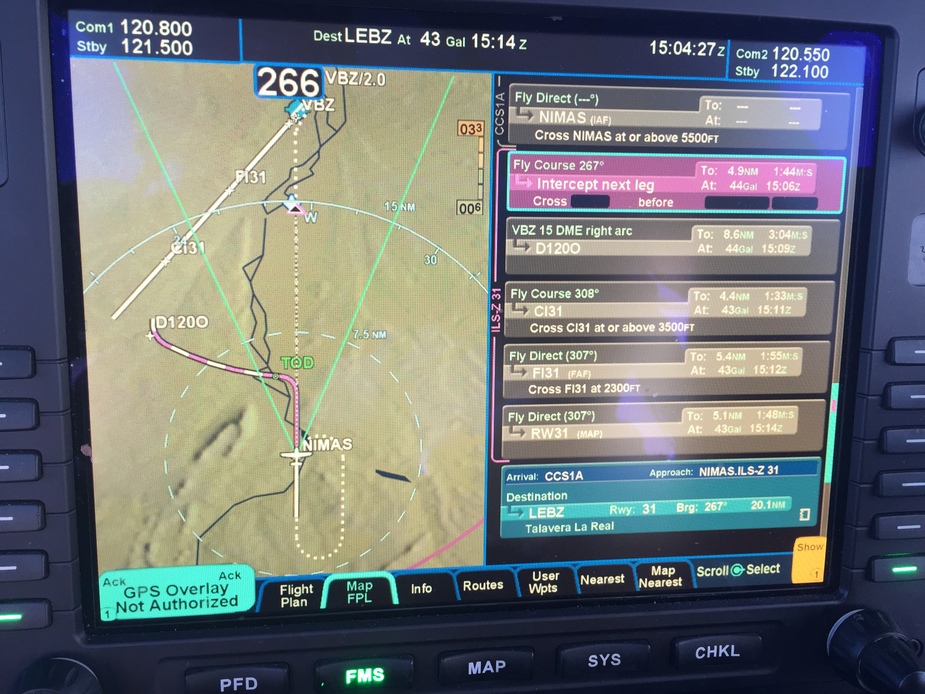
You see also see the warning message about the not authorized GPS overlay. That message goes away once the system has switched to the localizer and glideslope. It does this when approaching the localizer within a certain angle and before the FAF.
The curvature of the path shows up also on the PFD in the nav section. You can also see that I have set the bearing pointer to NAV1. That way I notice when the automation in the background has tuned and identified the localizer.
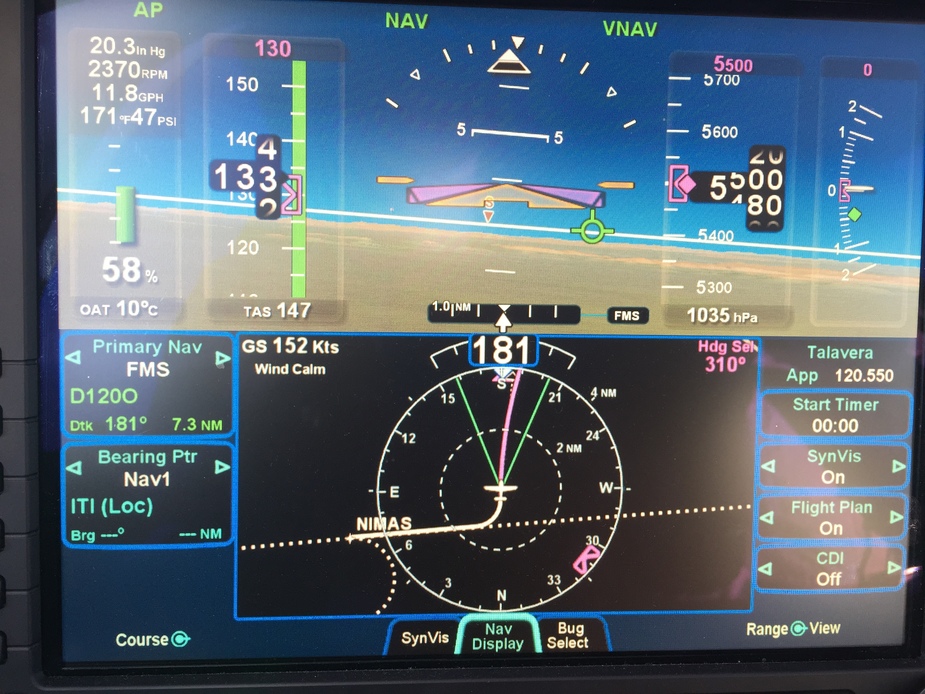
Now I’m approaching the localizer. Notice the pronounced bend in the magenta line.
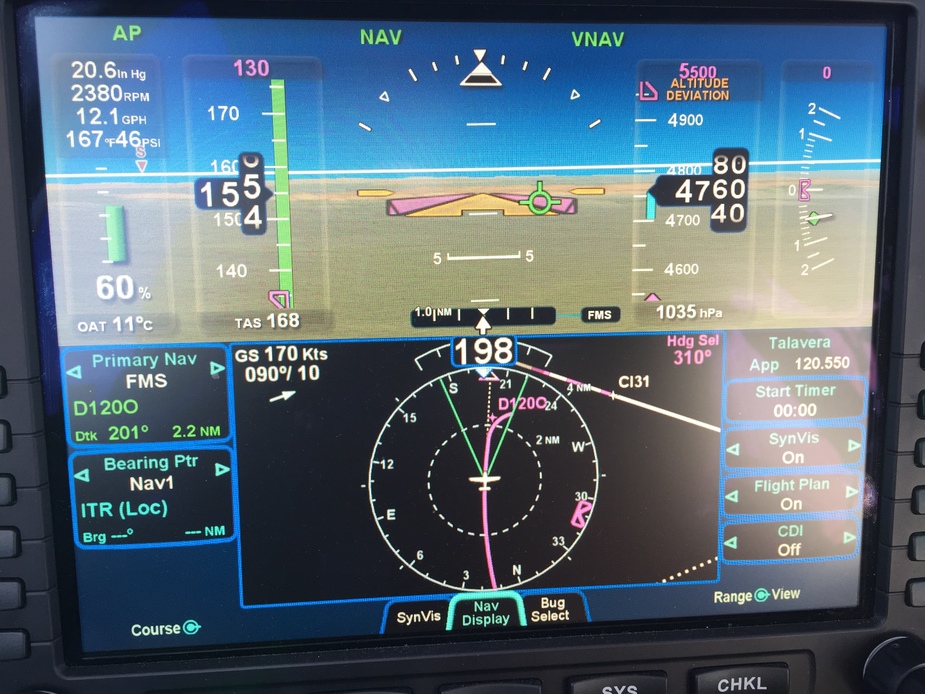
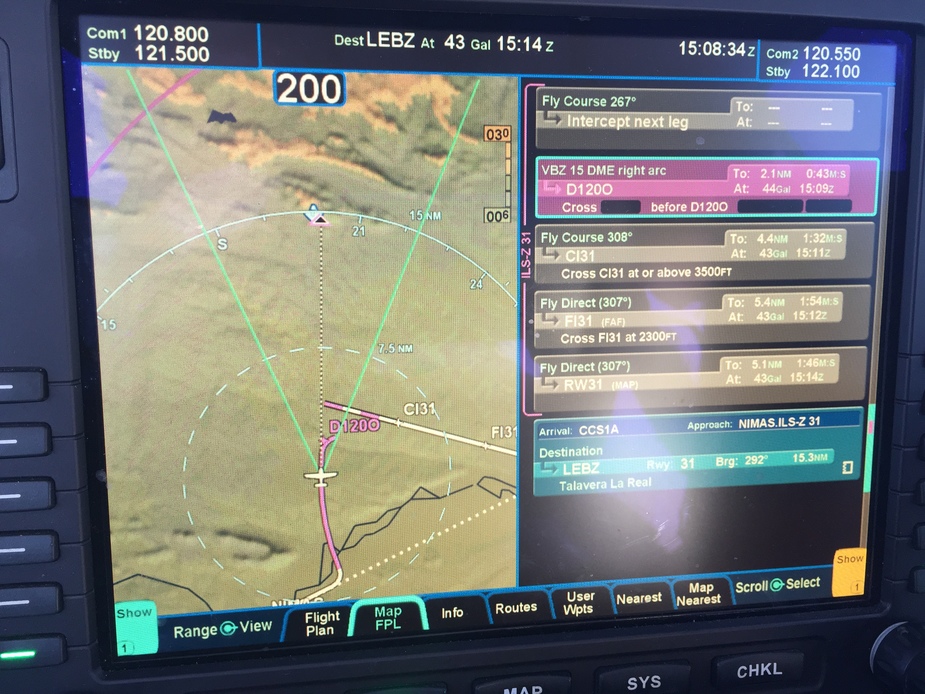
Now comes the turn onto the localizer.
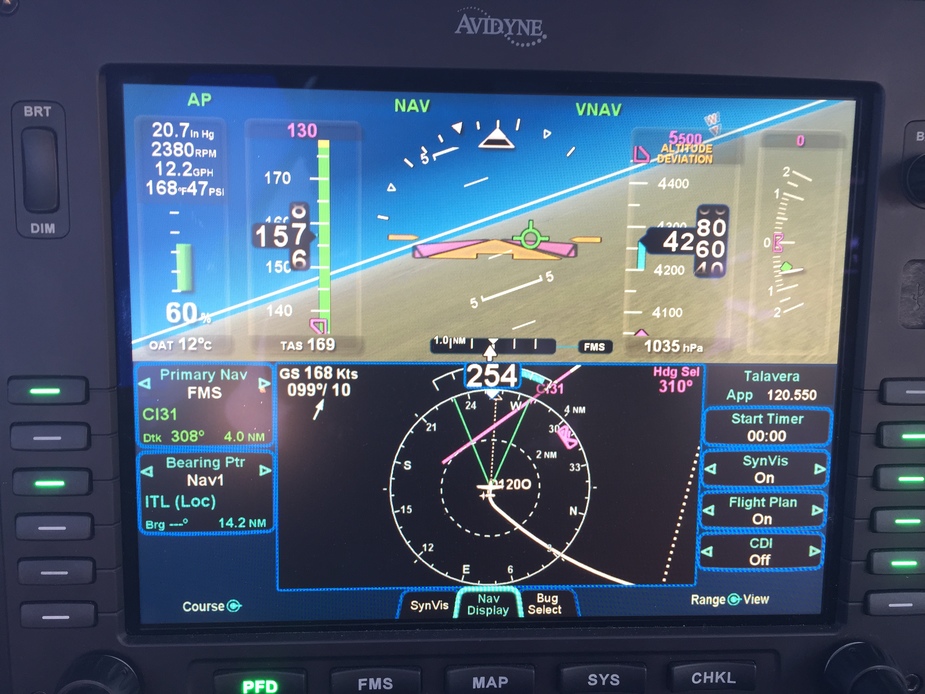
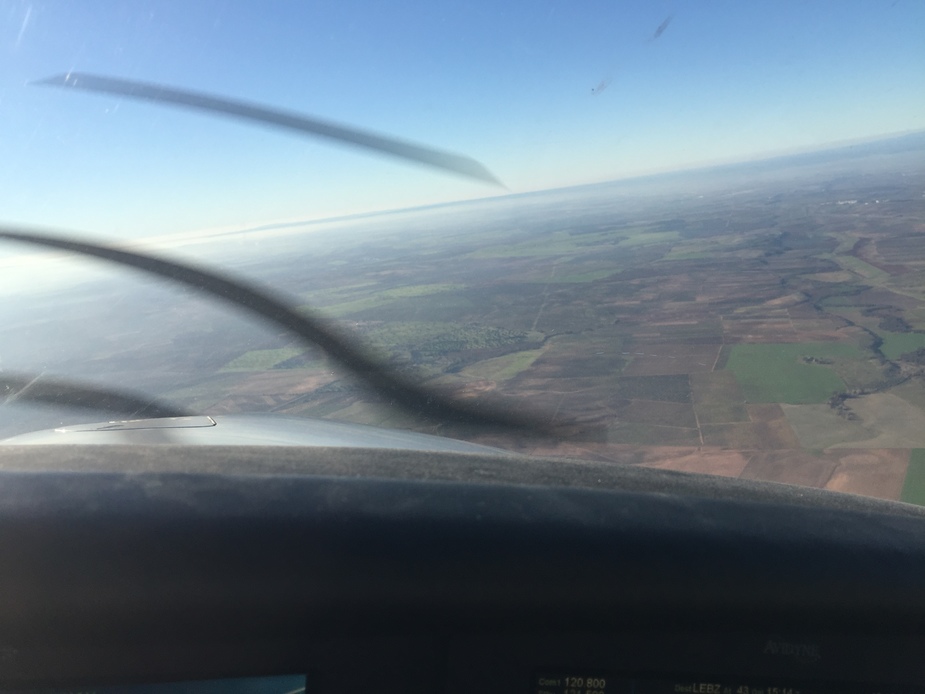
Now the system has switched to the localizer and glideslope. You see green needles on the PFD. It also says “VNAV terminated” and is in approach mode to capture the glideslope to follow it.
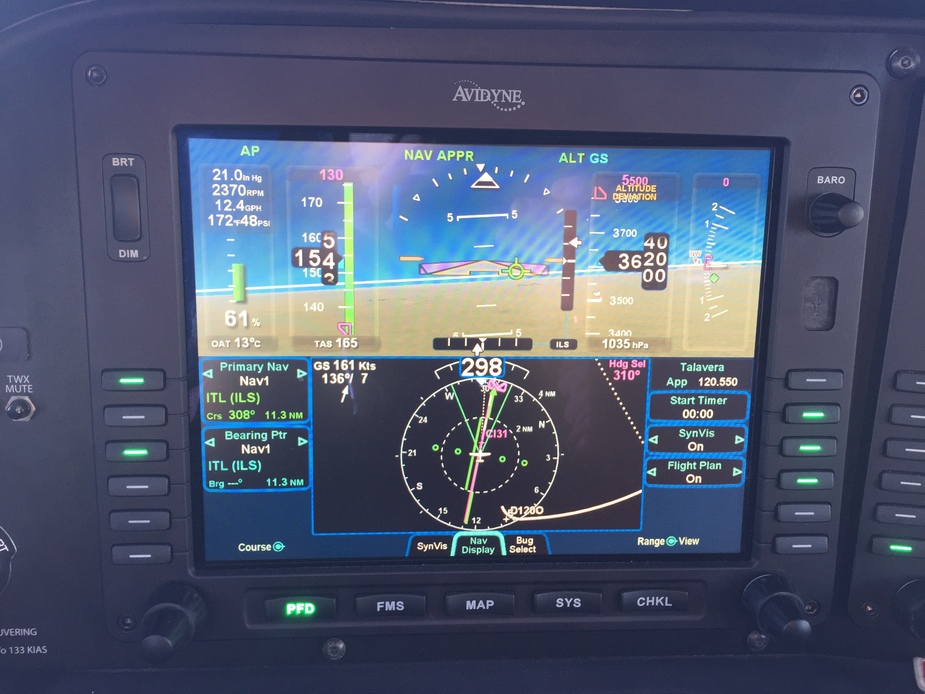
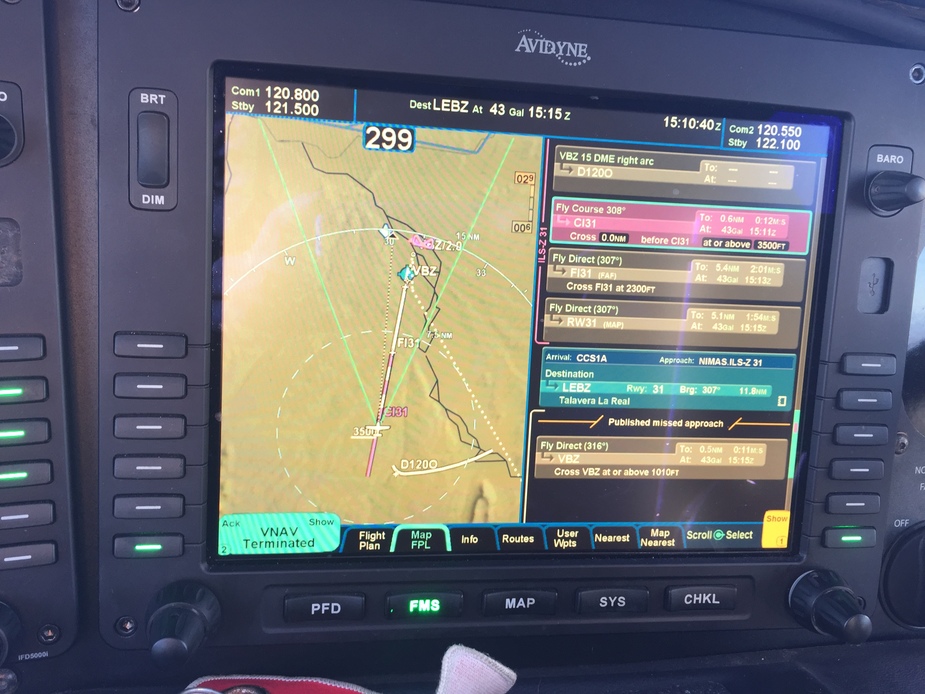
Once it has captured the glideslope I switch the bearing pointer to FMS and it shows me the waypoint for the runway threshold. I use that at large airports with lots of jet traffic to keep my promise of “160 kts until 2 NM out”.
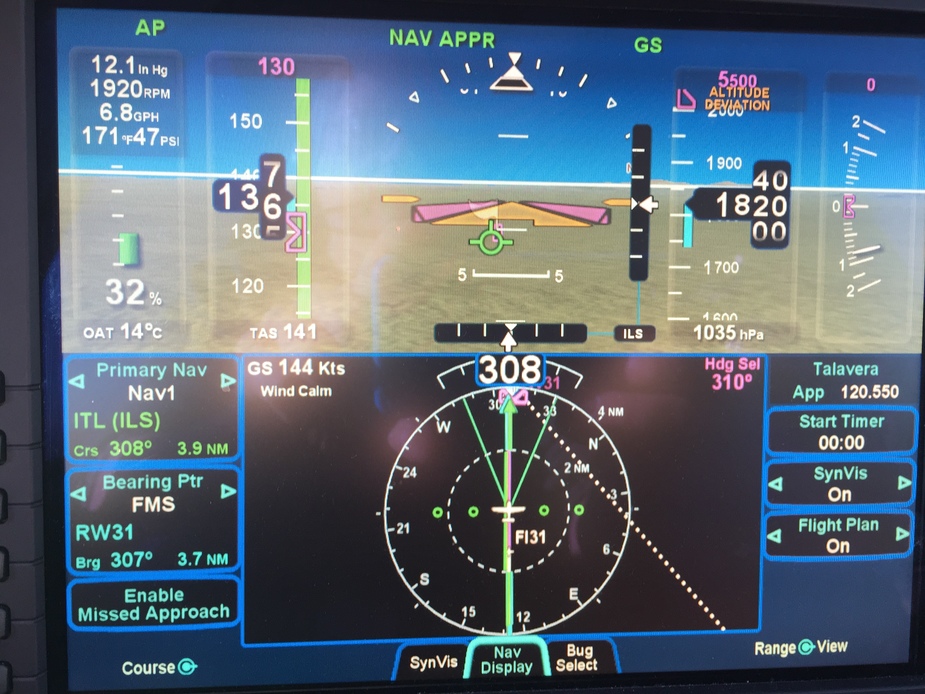
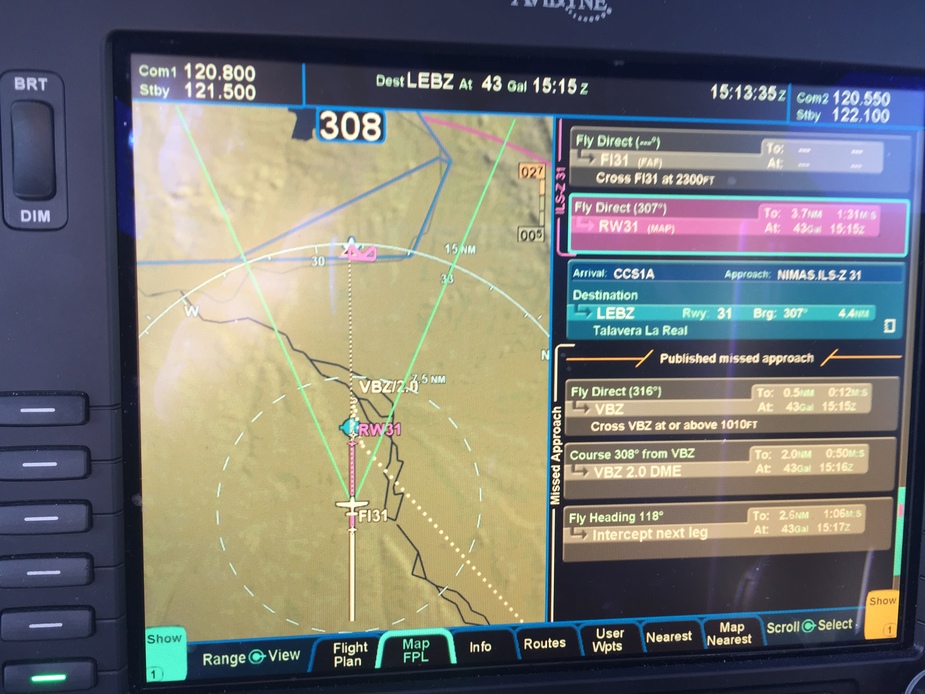
And there we are. Notice the arresting net before the threshold bars. This is a primarily a military airport for fighter jets and they have those nets at both runway ends.
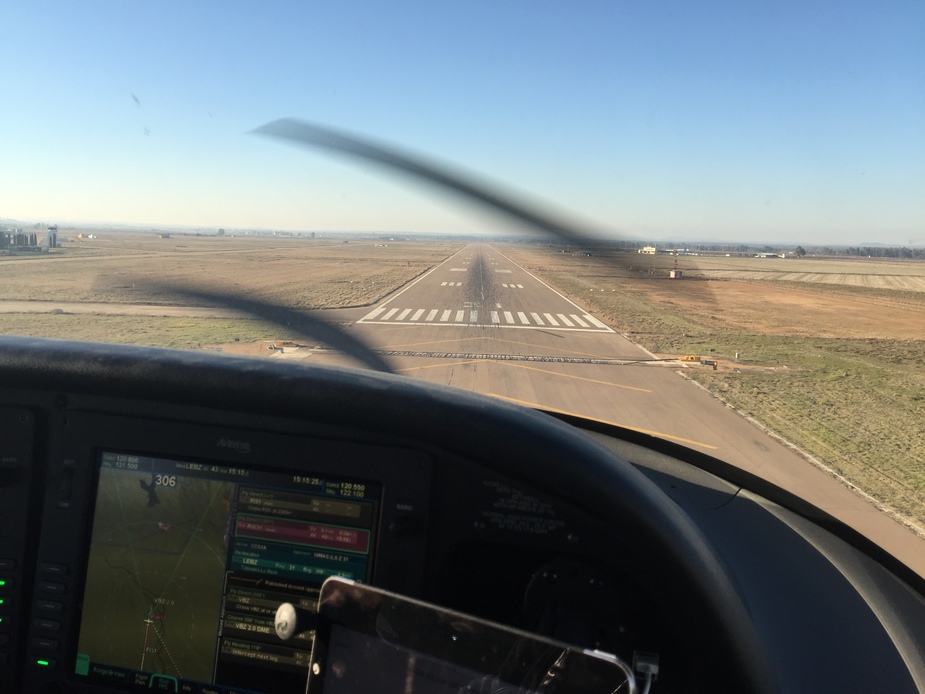
Felices Fiestas!
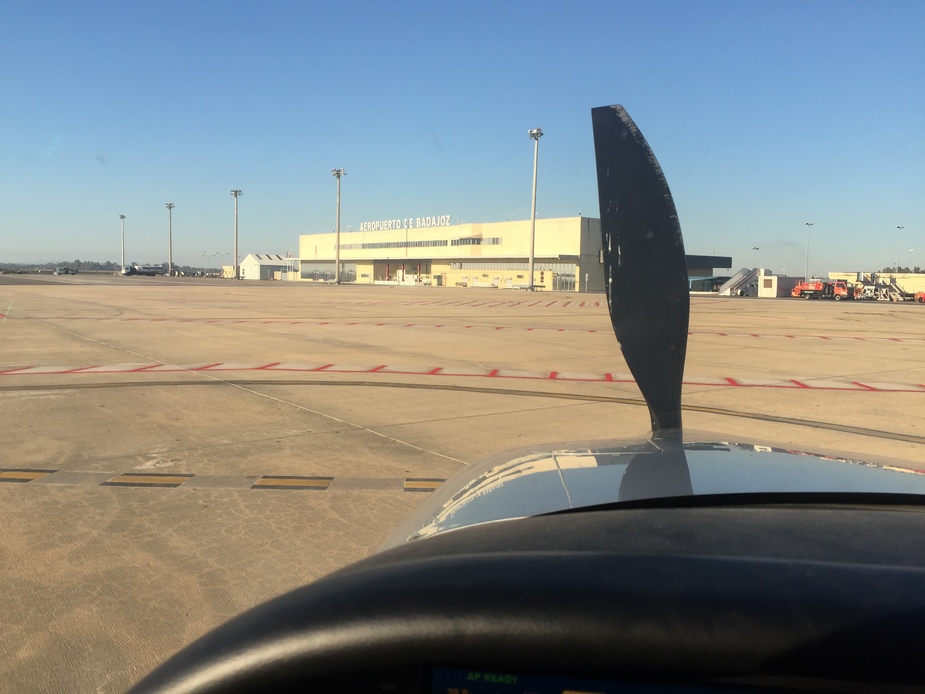
Stephan_Schwab wrote:
You may notice that the way from the IAF at NIMAS to the localizer is slightly curved. Interestingly on my R9 screen it also appears like that. I don’t know how it was coded and I’m not implying RF legs but it does have a feel of that to it.
Stephan, it is a GPS overlay of a DME arc. It wont be coded as an actual RF leg. Is that the normal PFD in R9 (I have never actually seen it before) or have you added menus and options for our benefit? It seems rather busy….
Yes, a DME arc. R9 can fly RF legs but obviously being able technically and allowed to is not the same. That has been a topic of discussion at COPA and thus I remembered and was joking a bit.
There is no custom configuration on R9. You find it busy? For me it is actually less busy then the G1000 I flew with during my training and IFR exam.
Stephan_Schwab wrote:
There is no custom configuration on R9. You find it busy? For me it is actually less busy then the G1000 I flew with during my training and IFR exam.
Really? It seems very functional but a lot going on. The Ui is almost certainly better than G1000 as it is 14 years younger.
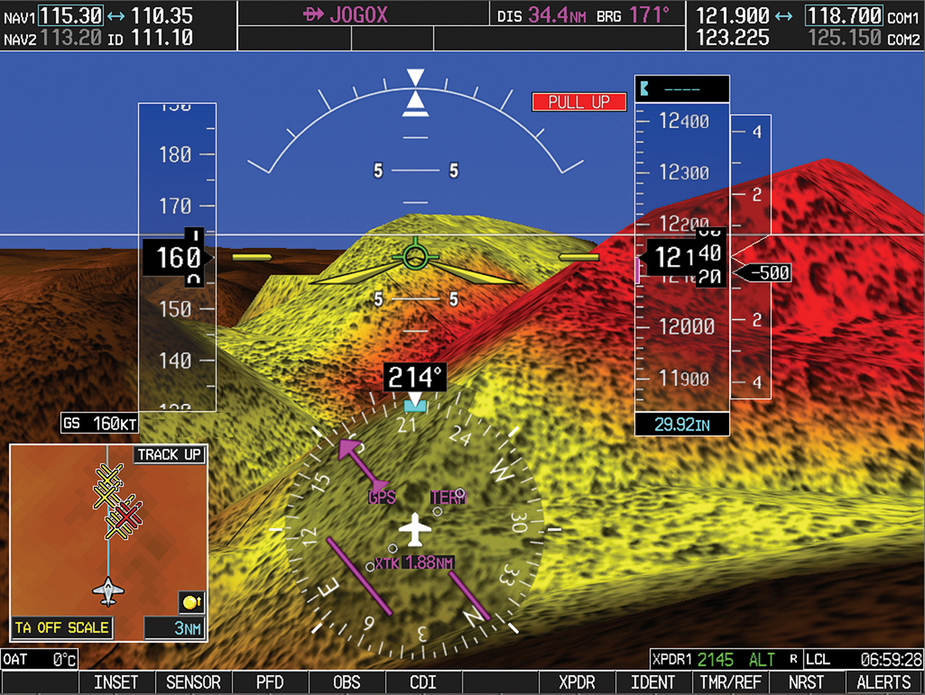

Ah! Well… I can do that too :-)
I can switch to SynVis and then it looks pretty much the same. I’ll take a picture on the way back to Sabadell LELL where there are some mountains. It basically removes the navbox and overlays the terrain view with data – the same way as your pictures show.
Stephan_Schwab wrote:
I use that at large airports with lots of jet traffic to keep my promise of “160 kts until 2 NM out”.
Surely there is something amiss here? On that image at 3.7 nm from the threshold, you are at 136 kts, which I would say is much more reasonable than 160 kts at 2 nm, which would be an accident waiting to happen. So either that is a typo, or you mean TAS or GS? But when a controller asks or gives you a speed, it is always IAS.
Let me explain. On large airports I do fly 160 kts IAS on the ILS until 2 NM from the threshold. I pull the power to 20%, my plane slows down to 120 kts, I set 50% flaps, it slows down to 110 kts and I set full flaps. That gives me something like 85 kts. At that point I have to add add power and cut it when I have decided where to touch down which is not the touchdown zone of a large runway but further in. Large airports appreciate a small plane to vacate the runway close to the GAT and the quickest way is to fly there instead of rolling there.
There is nothing risky about that. It’s just a matter of having a big propeller that acts as some sort of speed brake and manage the energy. It is pretty easy to end up with the speed you want.
Today at Badajoz there was no other traffic – none at all – so I opted for the sight-seeing full procedure and go it slow way of approach. Hence the time to take pictures.
Stephan_Schwab wrote:
Let me explain. On large airports I do fly 160 kts IAS on the ILS until 2 NM from the threshold. I pull the power to 20%, my plane slows down to 120 kts, I set 50% flaps, it slows down to 110 kts and I set full flaps. That gives me something like 85 kts. At that point I have to add add power and cut it when I have decided where to touch down which is not the touchdown zone of a large runway but further in. Large airports appreciate a small plane to vacate the runway close to the GAT and the quickest way is to fly there instead of rolling there.
Stephan, that sounds like hard work.
Not at all. It’s the fun part after a boring 3 hrs flight as it means to actually fly the airplane instead of watching the autopilot do its work :-)